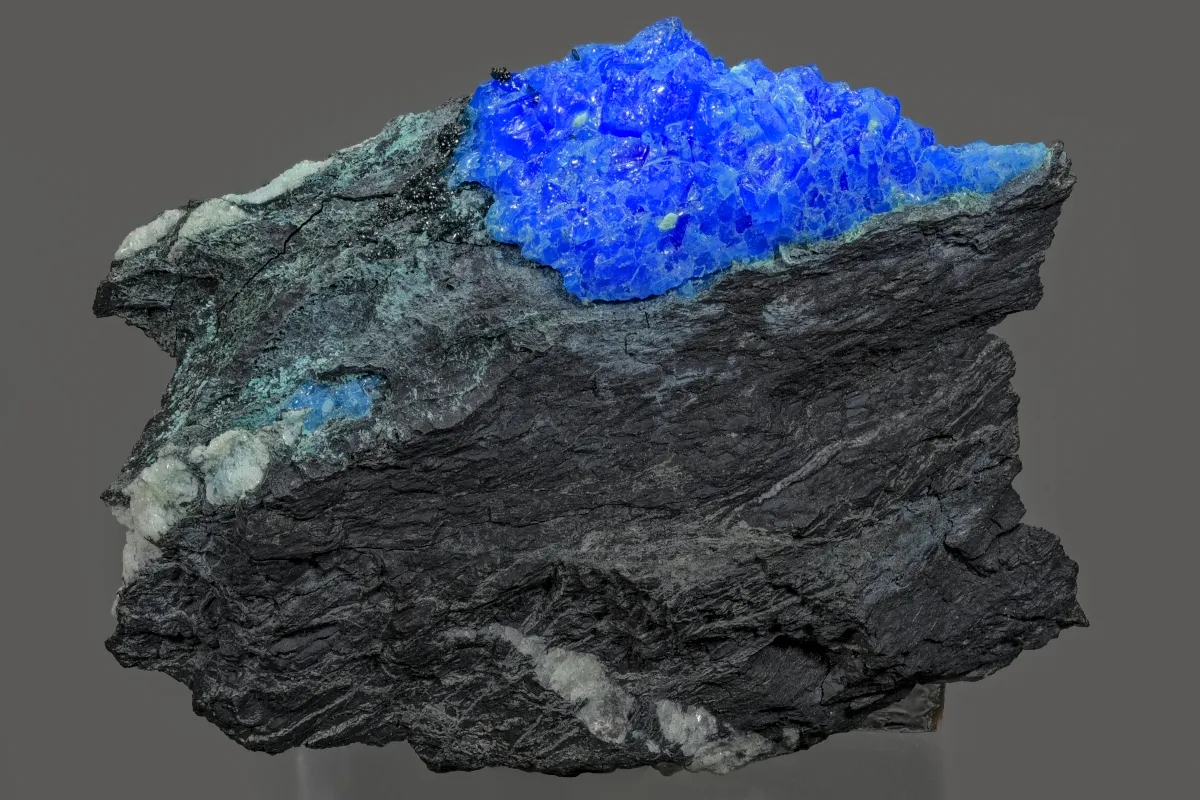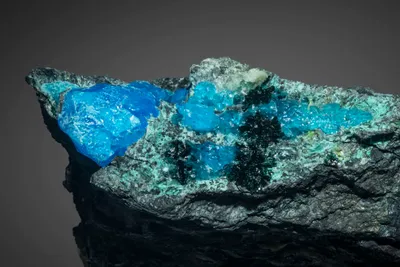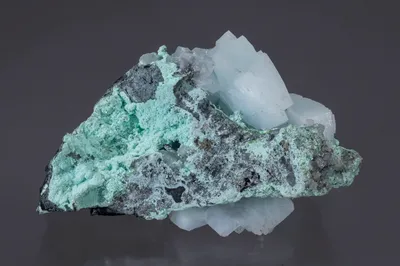
Image Credit: John Schneider
Title
chalcanthite
Composition
Cu2+SO4.5H2O
Crystal System
Triclinic
Status at Tsumeb
Confirmed
Abundance
Very rare
Distribution
First (?) and second oxidation zones.
Paragenesis
Supergene; post-mining.
Type Locality
No
Entry Type
Species TSNB75
General Notes
Strunz and Tennyson (1967) noted the occurrence of beautiful crystals and crystalline masses of chalcanthite in the upper levels of the mine. Klein (1938), however, considered chalcanthite "… a great rarity".
Most examples of chalcanthite are from the first oxidation zone (Strunz and Tennyson 1967) and it is much scarcer in the second oxidation zone (Geier 1973-74).
Pinch and Wilson (1977) commented that:
"The crystals and crusts vary in color from attractive blues and greens to nearly white, but they decompose and disintegrate very quickly after being collected. Chalcanthite is commonly associated with sulfide ore."
In the second oxidation zone, in the North-East Stope on 35 Level, chalcanthite was found in an unusual paragenesis with anhydrite, lammerite, leightonite and thometzekite (Keller 1981, 1984; Keller and Bartelke 1982; Gebhard 1999). The discovery was made early in 1980 and several specimens were recovered by TCL mineralogist John Innes (E. Nickel, c. 1993, John Innes Collection Catalogue, unpublished). Keller (1984) pointed out that this assemblage crystallised under acidic conditions with pH < 3.
Some examples of chalcanthite from Tsumeb are undoubtedly of post-mining origin, as noted by Bartelke (1976).
Associated Minerals
anhydrite; gypsum; lammerite; leightonite; thometzekite



